Study Senate Bill 50
TO OUR READERS:
By John H. Welborne
Publisher and Editor
As a public service to our readers in the Greater Wilshire, Mid-City and other neighborhoods we serve, the Larchmont Chronicle is publishing this Special Supplement. The timing relates to the May 2019 consideration — by the California State Senate — of wide-reaching legislation proposed by State Sen. Scott Wiener of San Francisco. The impacts of Sen. Wiener’s proposals on California’s residential neighborhoods will be significant.
The Chronicle believes that the substance of Sen. Wiener’s wishes for Californians should be scrutinized and understood. We feel it is very important for Californians in general, and Angelenos in particular, to understand the thinking and motivation behind Sen. Wiener’s proposed new statewide zoning laws.
The best way to understand what is behind this proposed state takeover of local zoning is to read its chief proponent’s own words.
Much of the thinking behind Sen. Wiener’s new approach to state government overreach comes from academia, as you will see within Sen. Wiener’s explanatory 2018 blog posting that we republish here, almost in its entirety. (Web links to omitted sections are provided.) Sen. Wiener and his pedagogical and real estate developer allies believe that a radical change in Californians’ property rights is appropriate and necessary to correct wrongs emanating from the past. That is clear from reading Sen. Wiener’s own words.
Therefore, the Larchmont Chronicle offers these “Words from Wiener” so our readers may learn for themselves the background of what the Chronicle has concluded is dictatorial and confiscatory.
Pro and con
Sen. Wiener gets the first word — two pages of this Special Supplement. His portion is taken from his writings on the Internet. The reproduced posting relates to his motivations in pushing for last year’s failed SB 827, but his arguments still apply to his current SB 50.
Then, on the other two pages of the Special Supplement is information that the Chronicle believes represents what will be the impacts in our Los Angeles neighborhoods (as well as throughout the State of California) of what Sen. Wiener proposes. There also are references and links to organizations and websites that are concerned about, and opposed to, this state government takeover of local sovereignty.
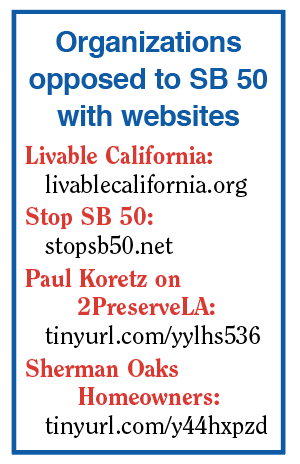
Time is of the essence
Sen. Wiener and his legislative allies and their real estate developer financial backers are pushing hard, and quickly … trying to find tradeoffs for as many special interests as possible to build support for their legislation. The interests being ignored — in fact, punished — are the Californians who have invested in single-family homes in which to live and raise their families.
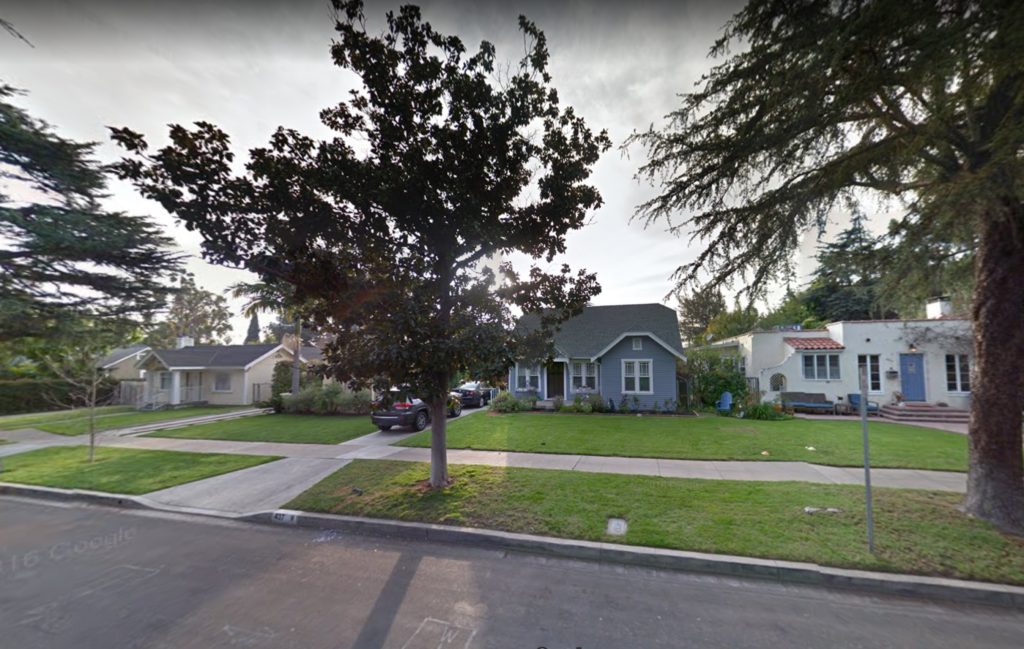
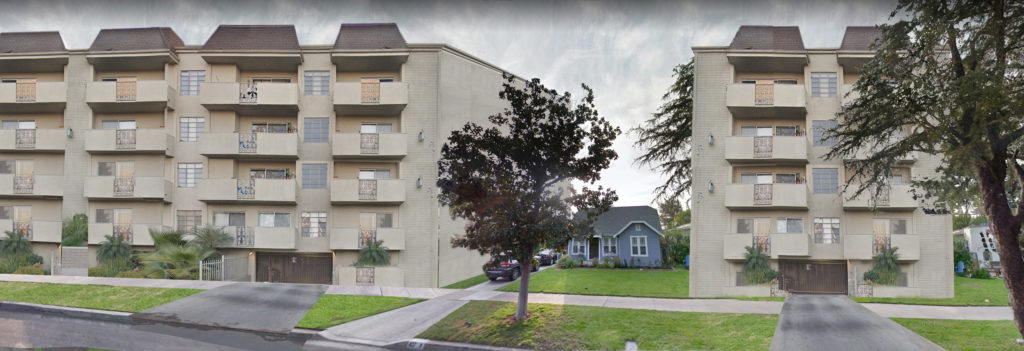
The Chronicle has assembled this information hastily because of the imminent printing deadline for the May issue of this paper, which distributes May 2. It is our understanding that the State Senate must act on Sen. Wiener’s and his allies’ proposal by the end of May.
Last year, Sen. Wiener’s similar bill (SB 827) was defeated when first reviewed in committee. This year, Sen. Wiener was appointed to chair the relevant new committee, and he moved his bill forward from that committee on April 2. Then, on April 24, the bill moved forward from a second committee, on which Sen. Wiener also sits.
Because the State Senate must act before the end of this month, the Larchmont Chronicle has rushed this Special Supplement to the printer.
The Los Angeles City Council, the San Francisco Board of Supervisors and the American Planning Association’s California Chapter are on record as opposing Sen. Wiener’s legislation for State takeover of local planning and zoning everywhere in California.
We hope you find this May 2019 Special Supplement useful.
Senator Wiener’s Q&A
when his original bill was
introduced last year
Text and illustrations are from
Sen. Wiener’s blog post at
extranewsfeed.com/@Scott_Wiener
Boldface highlighting in answers to questions has been added by Larchmont Chronicle editors.
My Transit Density Bill (SB 827):
Answering Common Questions
and Debunking Misinformation
by Scott Wiener
Jan 16, 2018 — Our recent announcement of my bill (Senate Bill 827) allowing for more housing near public transportation has drawn a lot of attention, questions, and feedback. Sadly, some have also spread misinformation about the bill. This piece attempts to answer common questions and debunk misinformation.
California is in a deep housing crisis — threatening our state’s environment, economy, diversity, and quality of life — and needs an enormous amount of additional housing at all income levels. Mid-rise housing (i.e., not single-family homes and not high rises) near public transportation is an equitable, sustainable, and promising source for new housing. SB 827 promotes this kind of housing by prohibiting density restrictions (for example, local ordinances mandating only single-family homes) within a half mile of a major transit station or a quarter mile of a bus stop on a frequent bus line. The bill also sets the maximum zoned height in these areas at 45, 55, or 85 feet — that is, between 4 and 8 stories— depending on the nature of the street. (Those heights are maximums. Developers can choose to build shorter, but cities can’t force them to build shorter through restrictive zoning. Cities can allow taller heights, however.)
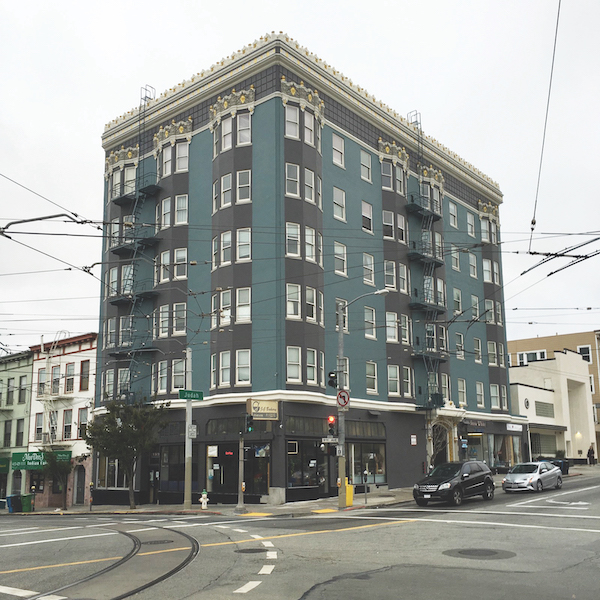
To be clear, in terms of the big picture:
• The only way we will make housing more affordable and significantly reduce displacement is to build a lot more housing and to do so in urbanized areas accessible to public transportation (along with investments in affordable housing and strong anti-displacement protections).
• The only way we will meet our climate and air quality goals is to build a lot more housing and to do so in urbanized areas accessible to public transportation.
• The only way we will continue to grow California’s economy is to build a lot more housing and to do so in urbanized areas accessible to public transportation.
Despite the critical importance of housing accessible to public transportation, many transit hubs and transit-rich areas are surrounded by mandated low-density housing, even strictly limited to single-family homes.
Restricting transit-rich areas to low-density housing has several negative impacts. First, it significantly limits how many people can easily use transit and thus drive less. By severely limiting who can live near transit, we push people farther away, force them to drive, create crushing commutes, and reduce transit ridership, all of which undermine our transit investments. Second, severely limiting density around transit perpetuates an ugly American reality: that restrictive low-density zoning has historically been a tool to exclude people of color, especially African-Americans, and poor people from neighborhoods. Indeed, low-density zoning—banning apartment buildings—was invented shortly after the U.S. Supreme Court ruled that racially restrictive zoning laws were unenforceable.
By removing density limits near public transportation, increasing the allowable height to create a path for mid-rise, multi-family housing, and exempting these transit-oriented projects from parking restrictions, we can encourage equitable, transit-oriented, sustainable, less expensive housing exactly where it makes the most sense.
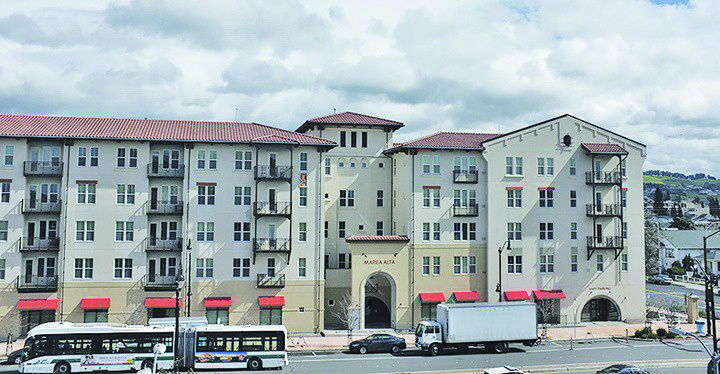
[For the remainder of this introductory section, see Sen. Wiener’s full posting at extranewsfeed.com/@Scott_Wiener]
As we continue to engage with communities across the state on SB 827, we will have a healthy debate around housing in California. Here are a few questions and concerns that have come up already:
Will SB 827 cause gentrification or lead to demolition of existing neighborhoods?
Absolutely not. Creating more housing for people does not lead to gentrification, and SB 827 does not make it any easier to demolish housing. To the contrary, SB 827 creates more housing opportunities for more people and tackles head on the ugly reality that mandated low-density zoning excludes poor people and—per the intent when low-density zoning was created 100 years ago—people of color.
“Today’s residential segregation in the North, South, Midwest, and West is not the unintended consequence of individual choices and of otherwise well-meaning law or regulation but of unhidden public policy that explicitly segregated every metropolitan area in the United States.” — Richard Rothstein, The Color of Law: A Forgotten History of How Our Government Segregated America
Gentrification is fueled by a lack of housing. When we don’t have enough housing, people compete for limited housing, and prices are pushed up. Moreover, when there isn’t enough housing and rents skyrocket, landlords have an economic incentive to push out long-term renters by raising the rent or evicting them to bring in higher-paying tenants. To fight gentrification we need more housing overall to reduce pressure on existing residents. Combined with that increase in overall housing, we must have strong investment in subsidized affordable housing for low income people, as well as strong protections against evictions and demolition of apartment buildings. More housing overall, combined with low income housing and displacement protections, will lead to a healthier and more affordable housing situation.
By requiring denser housing development near public transportation, SB 827 will help reduce displacement pressures and allow more people to live near transit. The current state of affairs — with major transit hubs surrounded by expensive single-family homes — is anything but equitable. It ensures that only a select few will be able to live near transit and exacerbates gentrification in those neighborhoods and other neighborhoods.
When we are in the depths of a housing crisis, like we are, the few areas rezoned by cities for high-density often see rapid development to accommodate housing demand while wealthier, low-density neighborhoods are left completely intact. SB 827 will spread multifamily zoning opportunities across more neighborhoods with high-quality transit access—including wealthier suburbs with strong transit access—rather than concentrating it only in a few areas. SB 827 is an unprecedented action *against* restrictive land-use restrictions with origins in racial discrimination and exclusion. So many Californians are reliant on or could benefit from public transportation, but they’re unable to afford a single-family home on a spacious lot and therefore are excluded from having reasonable access to this vital urban infrastructure.
Some have stated that SB 827, by allowing more homes to be built, will lead to demolitions and displacement. That is false. SB 827 does *not* in any way change local limits on rent increases or demolitions. If a city has rent control, it will continue to have rent control. If a city has an inclusionary housing ordinance (i.e., requiring a portion of new units to be affordable to low income people), it will continue to have that ordinance. And, if a city restricts demolitions of apartment buildings (as many do, particularly for rent-controlled buildings), those controls will remain fully in place.
In addition, we are looking at ways to include anti-displacement provisions directly in SB 827, in particular around demolition controls and affordability requirements. We will solve the housing crisis by having more housing while also protecting existing residents in their housing. I am completely opposed to incentivizing evictions and demolitions of sound housing—these actions have no place in a smart housing plan—and I fully support adding affordable housing for lower-income people. Our communities are stronger when they are stable and families are secure in their housing.
Yet, as we work toward stronger anti-displacement protections, we must not lose sight of the reality that low-density zoning around public transportation is exclusionary. It reduces the number of people who can live near transit and keeps out poor people by ensuring that these homes are extremely expensive. If we are serious about equitable housing access, we will achieve that important goal by increasing density around transit and ensuring strong anti-displacement and affordable housing requirements.

Will SB 827 reduce support for transit investment?
No. [For the remainder of this section relating to transit, see Sen. Wiener’s full posting at extranewsfeed.com/@Scott_Wiener.]
Will SB 827 reduce the amount of affordable housing or prevent communities from asking developers for community benefits?
No. By increasing housing opportunities near transit, we will create more housing, which will bring down the cost of housing. Additionally, by allowing heights of 45 feet to 85 feet near transit, we will allow for mid-sized apartment projects, which — unlike single-family homes — are subject to local inclusionary zoning requirements and impact fees. As a result, more projects will be subject to inclusionary zoning, and more affordable units will therefore be built as part of these developments. In addition, by converting more low-density projects into mid-size apartment buildings, these projects will become feasible candidates for the state’s affordable housing density bonus program. With more apartment buildings being built, the density bonus will be invoked more often.
[For the remainder of this section relating to affordable housing and the subsequent section relating to the environment, see Sen. Wiener’s full posting at extranewsfeed.com/@Scott_Wiener]
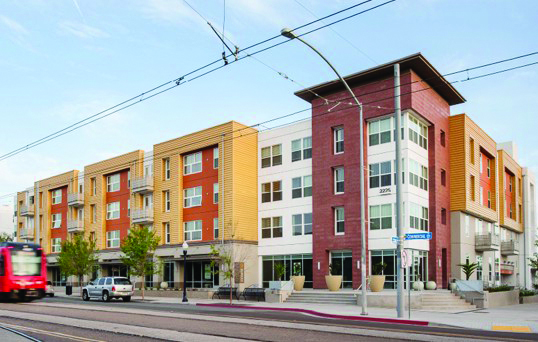
Will SB 827 quickly change the character and feel of my neighborhood?
No. Adding mid-size apartment buildings (4–8 stories) can modestly change the look of portions of a neighborhood in positive ways. It’s important to keep in mind that SB 827 does not allow for high rises.
Of course, *not* building housing, and thus escalating housing costs, also changes the character and feel of the neighborhood by changing who can live there. The architectural character of a neighborhood is important, and so is the human character of a neighborhood. When we push out low income people, young people, and growing families and when we spike homelessness, we absolutely change the character of the neighborhood even if we maintain the architectural character perfectly as is.
[For the remainder of this section relating to neighborhoods and the subsequent section concerning local control over zoning, see Sen. Wiener’s full posting at extranewsfeed.com/@Scott_Wiener.]
o o o
SB 827 is an important step toward addressing California’s housing crisis — a crisis that deeply affects us in so many ways. I look forward to a robust discussion about this bill and housing generally. I’m optimistic we will come out of this process with a terrific bill that makes our state stronger.
END OF SEN. WIENER 2018 BLOG POST
RETURN TO LARCHMONT CHRONICLE SPECIAL SUPPLEMENT:
Leaders and academics have written in opposition to these bills
At a March 2018 community hearing in Los Angeles, Zev Yaroslavsky, former Los Angeles County Supervisor and City Councilmember and presently Director of the Los Angeles Initiative at UCLA Luskin School of Public Affairs opined on how last year’s Wiener bill would radically change Southern California by “eviscerating decades of planning.”
Yaroslavsky has said recently that SB 50 is no improvement, specifically stating that Sen. Wiener says his bill will reduce the cost of housing, “but the opposite is the case. It’s going to insure only the building of market rate housing that only the more affluent will be able to afford. The need is in affordable, not market rate, housing.
“The second thing Wiener says is that it will help diversify neighborhoods. Not true. The only people who’ll be able to afford these new apartments are affluent people. The growing diverse population is mainly ignored in this legislation.
“Finally, Wiener’s bill largely removes parking requirements from rental housing. A brilliant idea for Los Angeles. Not.”
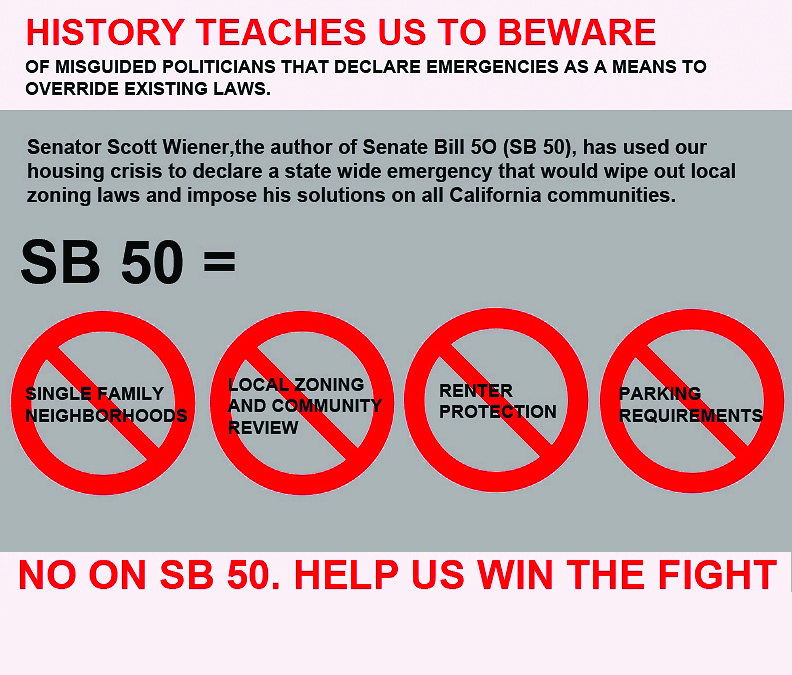
Following are a few excerpts from that 2018 dialogue with Zev Yaroslavsky, appearing in the “The Planning Report” at:
planningreport.com/ 2018/03/15/zev-yaroslavsky-scott-wiener-sb-827-triumph-wimbys
“What’s more, historic preservation zones — such as Angelino Heights, which is within a quarter-mile of the Sunset transit corridor, and South Carthay Circle, which is within a quarter-mile from the Pico, Olympic, and La Cienega transit corridors — could be razed in favor of five-to-eight-story, market-rate apartment buildings.
“Is that what we want to do to these neighborhoods? Does Scott Wiener want to take a wrecking ball to most of the retail villages and residential communities in Los Angeles? It’s nuts. Every responsible planner with whom I’ve spoken about this bill speaks of it with great disdain. It is classic overreach — a “one-size-fits-all” approach to the planning of the largest city in California. That’s why I say this is not a transit-oriented development bill; it’s a real-estate play of the worst kind.


See livablecalifornia.org/sb-50-impact-map-check-your-neighborhood/
“A San Francisco state senator cannot possibly understand the complexities and nuances of a city the size of LA — and he really shouldn’t try. Maybe he should use his own city as a guinea pig; let’s see how this brilliant idea works out in his hometown.
… “This is an arrogant and wrong-headed approach. Land-use policies, and their impacts on a community, must be left to local government — not the State Legislature — to determine. The Legislature cannot possibly know the unintended consequences of a broad-brush bill. And there are hundreds of unintended consequences.”
References:
Zev Yaroslavsky: Why SB 50 is Not Right for LA
planningreport.com/2019/04/29/zev-yaroslavsky-why-sb-50-not-right-la
Zev Yaroslavsky on Scott Wiener’s SB 827: The Triumph of WIMBYs
planningreport.com/2018/03/15/zev-yaroslavsky-scott-wiener-sb-827-triumph-wimbys
Blanket Upzoning—A Blunt Instrument—Won’t Solve the Affordable Housing Crisis
planningreport.com/2019/03/15/blanket-upzoning-blunt-instrument-wont-solve-affordable-housing-crisis
“If SB 827 Were Law When LA County’s Measure M Was on the Ballot, It Would Have Failed!”
Wiener: ‘Enact Estate Tax’
For another recent and interesting Sen. Scott Wiener bill, see SB 378, where he seeks to reinstate a California estate tax (there is none now) to address the state’s “racial wealth gap.”
Introduced in February, the draft legislation notes the roles of intergenerational wealth transfer and past and present barriers that have kept marginalized families from building wealth. The draft bill asserts that public sector intervention is needed to address wide-scale racial wealth inequality.
The draft bill provides that all taxes collected from reinstating an estate tax would be paid to a new Children’s Wealth and Opportunity Building Fund to counterbalance the uneven effects of intergenerational wealth transfer and “reverse our state’s record level of inequality.” The legislature would appropriate money from this fund to government programs and services that directly address and alleviate socio-economic inequality and that build assets among people that have historically lacked them.
See: leginfo.legislature.ca.gov/faces/billNavClient.xhtml?bill_id=201920200SB378
Category: News


